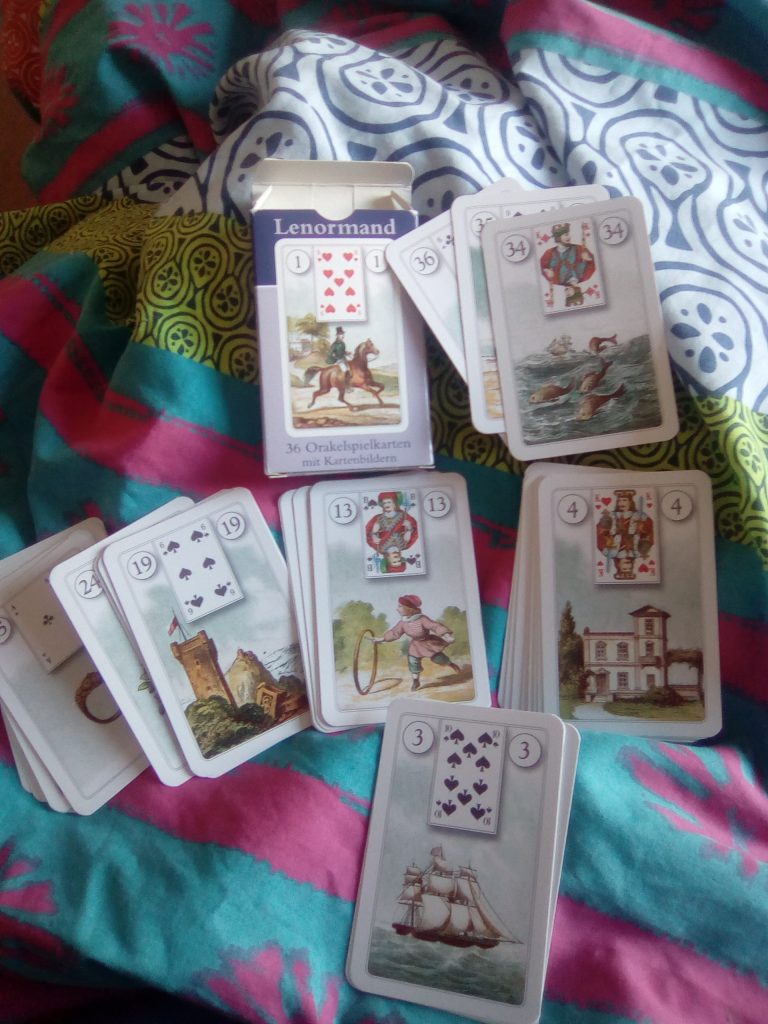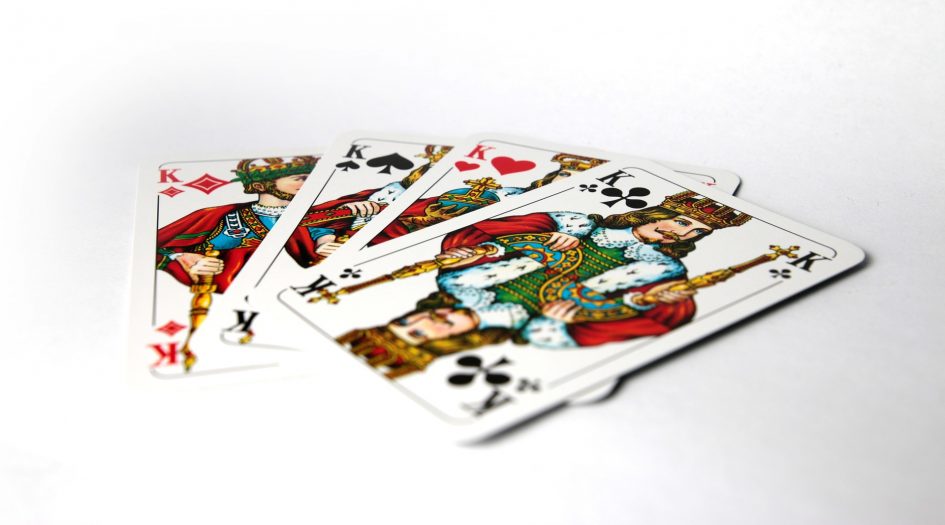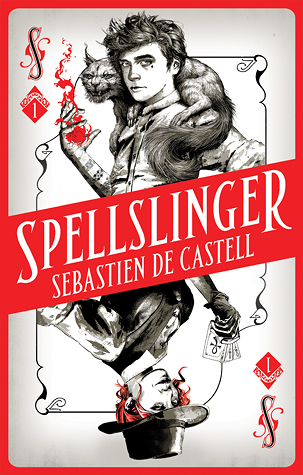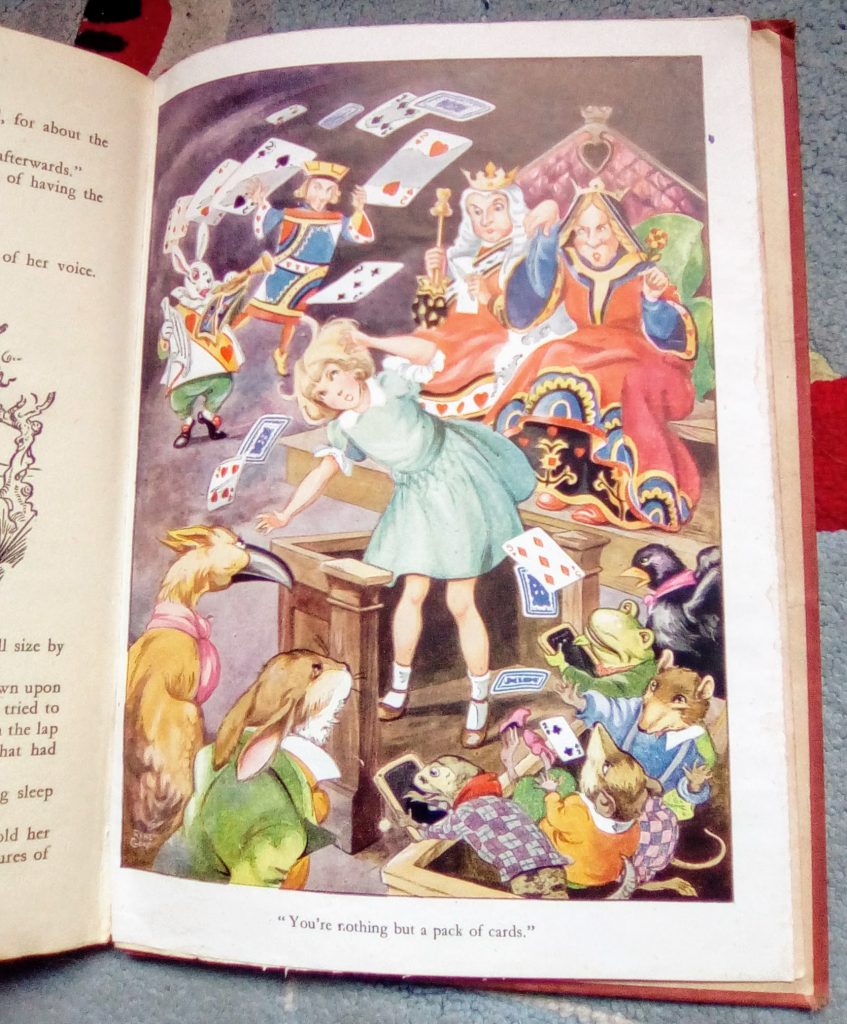I read Spellslinger this week in about three gulps and have been inspired by its greatness – to learn about cards, and to hurt my own characters, a lot. Honestly Sebastien de Castell heaps bad luck and trouble on his main character, Kellen, to such a degree that you fear it might be one of those YA books with a hopeless ending.
But no. The end is as satisfying as the beginning and middle.
Things I loved about this book:
The cover. This is what made me pick it up. I love its cool playing card design, and as you may know I love cards and card art.
The talking squirrel cat. On the cover blurb he is described as a racoon. Maybe they are the same thing or maybe the blurb-writer channelled a bit too much of Rocket from Guardians of the Galaxy, but either way, the talking squirrel cat is a fantastic character with most of the best lines.
The cowboy/ Clint Eastwood / gypsy / Indiana Jones figure of Ferious Parfax, who is a woman. I love her voice, her sarcasm, her grit and the fact that she is solidly portrayed as a character and not as a Woman Character.
Cards. Cards as magic, cards as mystery, cards as game and cards as weapons. Oh yes please.
No black and white bad or good guys. Everyone has a reasonable motivation for their actions. Even their most barbaric actions. Who tortures a child? A parent who believes it will save them. Now that’s twisted, but in a totally convincing way. Five stars for the psychology in this book.
Magic. I love the names of the magic in this book: ember, sand, blood, silk and breath. And … Shadowblack. The names alone make me hope this will be a series with six parts.

Lenormand cards – originally from eighteenth-century France these were a whimsical traditional game and fortune-telling tool.
The transformation of Kellen. He starts out as a bit of a dick – admittedly he’s young but you do wince at his arrogance. The more Castell hurts him, the more sympathetic you become. And – with a little help from Ferius – Kellen gradually learns some valuable lessons about how to treat people, meaning he’s ready when he needs to make the final climactic decision.
Which brings me to the thing I loved most about this book –
Structure. From the first pages, I sensed this book had a solid structure which would land me in a place which I wanted to go to by the end. I trusted that all the pain Kellen goes through would pay off.
The book’s cover made various grand claims. Those always make me suspicious. … But wherever this book’s breathless claim came from, it’s justified. I could not put this book down and I can’t wait to read the next in the series.
Learn more about the simplest form of (European) cartomancy, the Lenormand deck. I now own one of these. I fell in love with the images and could not resist…
See Jonathan Creek fire a playing card at an enemy. It’s at 35:56 of this dodgy-looking video of the Three Gamblers episode.
Listen to Roots by Alice Merton. That’s not related, but it’s been played a lot this week while I read the book, and it has a distinct wanderer-romance feel to it.
Is gypsy fantasy a subgenre, I wonder? Two minutes later… Yes it is, crossing over with pirate fantasy and cowboy fantasy too … but it’s been called out by some who say, with justification, that gypsy is a racial term and that the Rona people suffer because of the use of gypsy figured in popular culture. http://www.jimchines.com/2013/10/gypsies-and-other-fantasy-beings/
If you do a search for gypsy fantasy, the Images results pretty much tell you everything you need to know about how gypsy people are portrayed in popular culture. Not all gypsy-esque figures in fiction are Roma of course – Spellslinger’s Ferius Parfax has an intriguingly opaque backstory – but the article above makes a good point about sensitivity to real life peoples when working with fiction tropes. Phillip Pullman referenced the Gyptians in his Lyra books, which seems clever at first because it sounds historic – but is it any better?
Is cartomancy fantasy a subgenre? (another two minutes googling confirms it. I think it warrants a future post purely on that topic, especially since I love it.) The cartomancy in Spellslinger is understated – still to be explained in future books I suspect. Meanwhile here are some examples of card games used in science fiction and fantasy. I did long for the hexagonal card game in Battlestar Galactica! And here’s some analysis and more examples, from the never-fails TV Tropes.
Finally, the ultimate playing-card fantasy, Alice in Wonderland. I now own my grandmother’s marvellous 80-year-old copy of this with gorgeous illustrations.
Playing cards, magic, fantasy, books – it’s been a good week. What are you reading right now?




1 Pingback